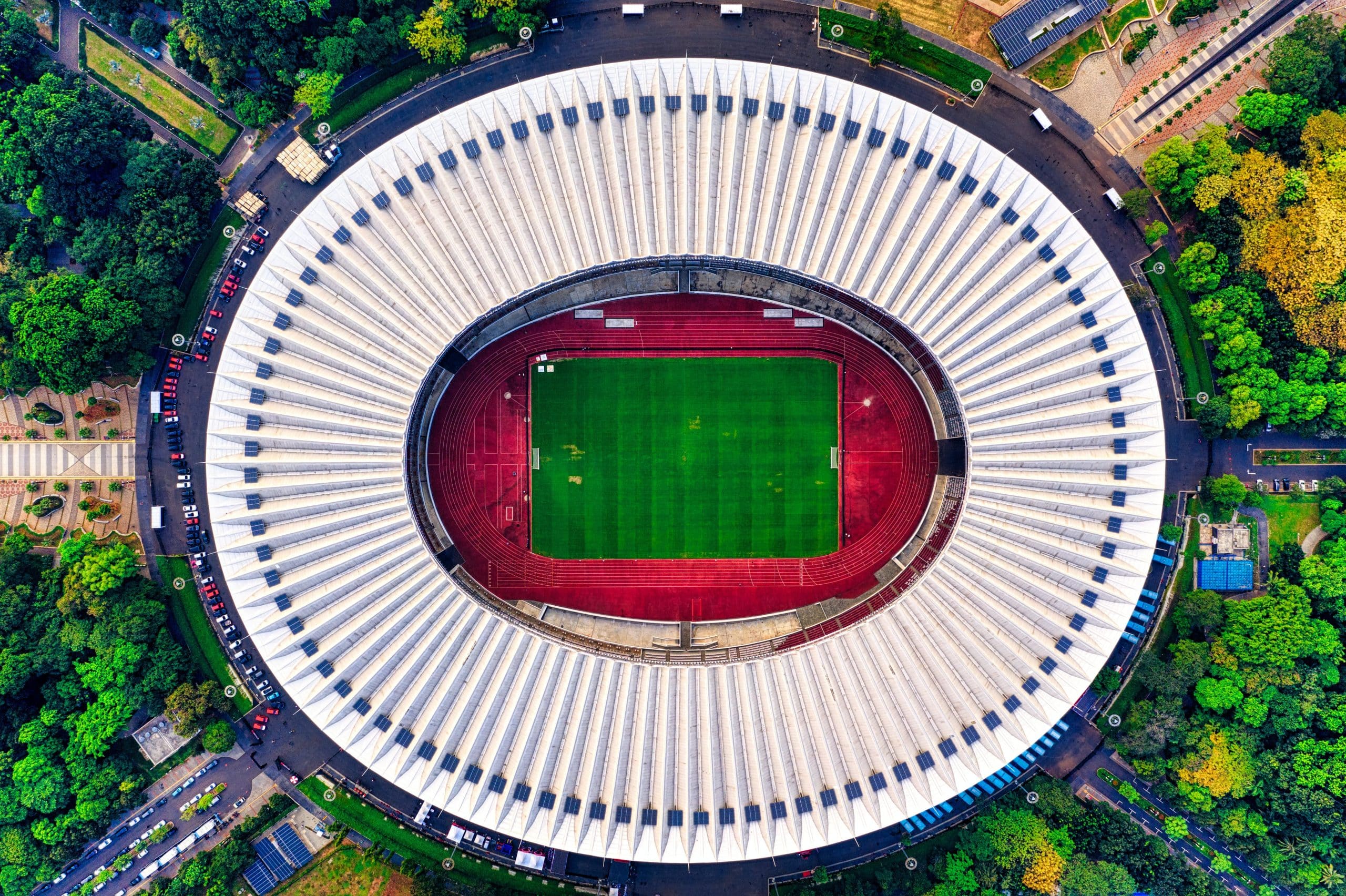The future of sports architecture and innovative stadium designs.

Ever wondered how the stadiums of the future might look? As sports lovers, we all share a common interest in the architecture of the stadiums, the very arenas where our favorite games unfurl. Technology is evolving at a brisk pace and along with it, the way architects and designers approach the creation of sports facilities. Let’s delve into the world of future stadium design and glimpse at how technology, architecture, and innovation are all coming together to revolutionize the sports experience.
The Role of Architecture and Design in Sports Stadiums
The architecture and design of sports stadiums have always been vital in shaping the experience of fans. These structures are more than just places where sports are played. They are a testament to architectural prowess, blending aesthetics, functionality, and emotion in one seamless package. From the beautiful, sweeping curves of a stadium’s façade to the intricate details of its interior design, every element plays a part in creating an atmosphere that transports fans into a world of exhilarating action.
A lire également : How do sports events contribute to raising awareness about global issues?
RTF, or Real-Time-Framework, is a critical tool used by architects and designers to visualize and simulate their designs. It allows them to create a digital picture of the stadium before it’s built. Using RTF, architects can test out different design ideas, assess how well they meet their functional requirements, and see how they will look and feel to the fans.
The New Wave of Stadium Design: Technology and Innovation
The future of sports stadiums is being shaped by the cutting-edge technology and innovative design principles. The era of simple, bowl-shaped stadiums is gradually fading out, making way for more complex and innovative designs. Today, architects are challenged to create stadiums that not just house sports events, but also provide exciting, immersive experiences for the fans.
Dans le meme genre : The cultural symbolism of sports mascots around the world.
One of the pioneering firms in this field, Populous, has designed some of the world’s most iconic stadiums, that have won numerous awards for their innovative designs. Their creations showcase how technology can be used to enhance the sports experience, from retractable roofs and intelligent lighting systems to high-definition screens and state-of-the-art sound systems.
Stadiums of the Future: Sustainable and Eco-friendly Designs
One of the key trends shaping the future of sports architecture is the focus on sustainability. Architects and designers are taking up the gauntlet to create stadiums that not only deliver exceptional experiences but also help save the environment.
From solar panels and rainwater harvesting systems to energy-efficient lighting and heating systems, stadiums are incorporating a plethora of green technologies. These eco-friendly designs are not just about being responsible; they also add a unique aesthetic appeal to the stadium. Moreover, they’re a testament to the fact that sports, a field often associated with physical exertion and competition, can also be a platform for promoting awareness about environmental conservation.
Transforming the Fan Experience with Smarter Stadiums
The future of sports stadiums extends beyond just the physical structures. It also involves transforming the overall fan experience. With the advent of smart technology, stadiums can now offer a range of advanced facilities that significantly enhance the fan experience.
Imagine walking into a stadium and having your seat directions and food ordering options right on your smartphone. Picture being able to tap into real-time stats of your favorite players during the game. These are not far-fetched dreams but realities being made possible courtesy of smart technology.
National Pride and Cultural Identity in Stadium Design
Stadiums are more than just sports venues. They are symbols of national pride and cultural identity. The design of these structures often reflects the values, traditions, and ethos of the country they represent. Therefore, architects and designers have a critical role in encapsulating these elements into their designs.
A well-designed stadium can evoke a strong sense of belonging among the fans. It can resonate with their cultural identity and instill a sense of pride in their national heritage. This emotional connection can amplify the overall sports experience, making it more than just a game.
As we look forward to the future of sports architecture and stadium design, it is clear that the focus will be on enhancing the fan experience, promoting sustainability, and embodying cultural identity. With technology leading the way, the future of sports stadiums is undoubtedly bright and exciting.
Embracing Digital Tools in Stadium Design
In the era of technology, digital tools are reshaping the way stadiums are designed. RTF, or Real-Time-Framework, is one such tool that is becoming essential in the creation of future sports facilities. With the ability to simulate designs in a digital environment, architects can save picture-perfect concepts of their designs before even placing a brick.
This advanced technology provides an unprecedented level of flexibility, enabling architects to experiment with various designs. It allows them to assess the practicality of their concepts, fine-tune the details, and envision the overall aesthetics of the stadium. This can be particularly beneficial in designing complex elements such as retractable roofs, as seen in the Mercedes-Benz Stadium in Atlanta.
Designed by HOK, a leading firm in sports architecture, the Mercedes-Benz stadium features a unique retractable roof that mirrors the logo of its namesake sponsor. Leveraging RTF in its design process, the firm was able to examine the mechanisms of this complex structure and ensure its functionality.
Harnessing the Power of Smart Technology for Enhanced Fan Experience
The advent of smart technology is revolutionizing the fan experience in stadiums. From the moment fans enter the stadium, smart technology can guide them to their seats, offer food ordering options on their smartphones, and even provide real-time stats of the game.
One notable example is the Allianz Arena in Munich. Designed by Herzog & de Meuron, the stadium is equipped with advanced technologies that offer a unique and personalized experience to the fans. Fans can use their smartphones to access a multitude of services, including pre-ordering food and beverages, accessing player stats, and even finding the shortest bathroom lines.
In addition to enhancing the fan experience, such technologies can also streamline operations, improve security, and contribute to the overall efficiency of the sports facility. This fusion of technology and architecture is indeed a testament to the future of sports stadiums.
Stadiums as Symbols of Cultural Identity
Stadiums are more than just arenas for sports. They are also powerful symbols of cultural identity and national pride. The design of a national stadium often reflects the values and traditions of the country, and architects have the crucial task of encapsulating these elements into their designs.
One notable example is the Al Wakrah Stadium in Qatar, designed by Zaha Hadid Architects. The stadium’s design draws inspiration from the traditional dhow boat used by Qatari fishermen, reflecting the country’s maritime heritage.
Similarly, the Beijing National Stadium, known as the Bird’s Nest, embodies Chinese craftsmanship and aesthetics. Designed by Herzog & de Meuron, the stadium’s intricate latticework and bold design have made it an iconic symbol of contemporary China.
These instances highlight the importance of cultural significance in stadium design, adding another layer of depth to the sports experience.
Conclusion
The future of sports architecture and stadium designs holds immense promise. As we look forward to the innovative stadiums of tomorrow, it is clear that the focus will be on enhancing the fan experience, promoting sustainability, and embodying cultural identity. With technology leading the way, the future of sports stadiums is undoubtedly bright and exciting.
Sports facilities of the future will be designed to offer the best possible experience to the fans, whether it’s through smart technology or meaningful design that resonates with their cultural identity. The evolution of stadium designs, led by the likes of Populous, Zaha Hadid Architects, and others, is a clear testament to the transformative power of architecture in sports.
From an aesthetic, functional, and environmental standpoint, the future of sports architecture is all set to redefine the way we experience our favorite games. Whether it’s the technological marvel of the Mercedes-Benz Stadium in Atlanta or the cultural embodiment of the Al Wakrah Stadium in Qatar, the dawn of a new era in sports architecture is upon us.
